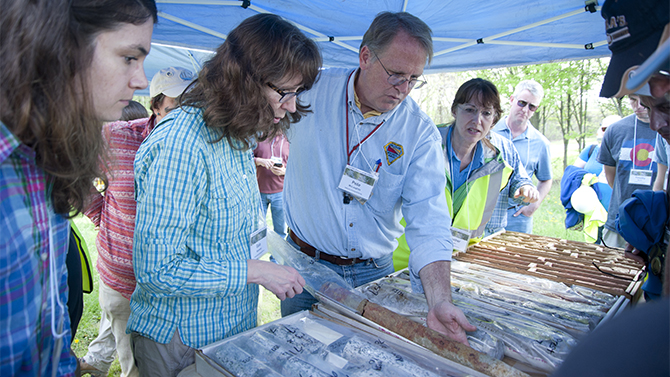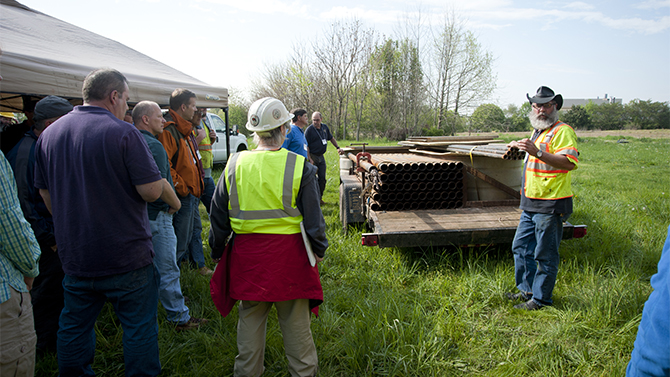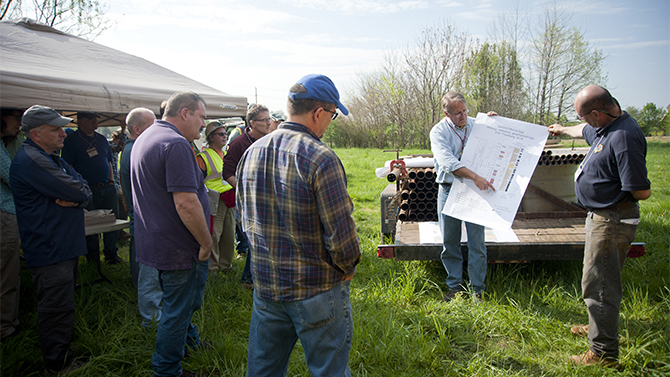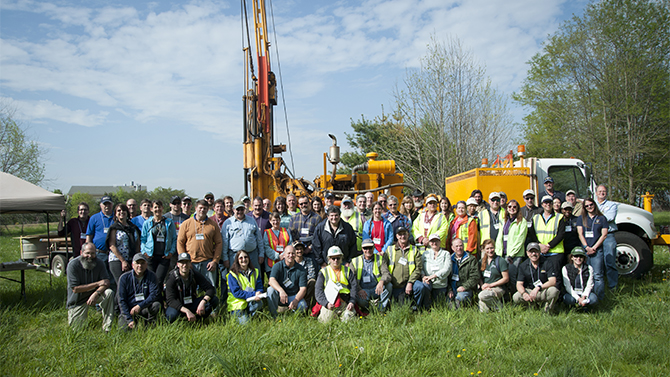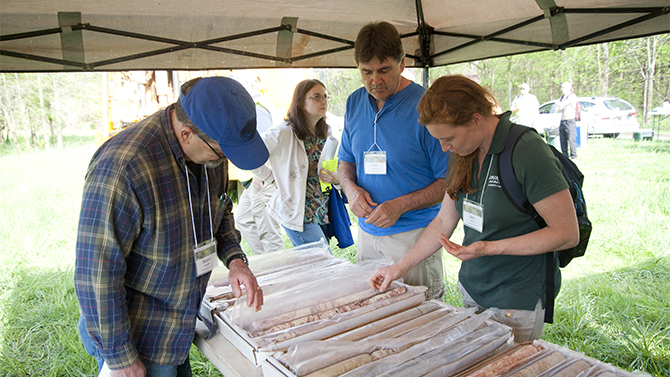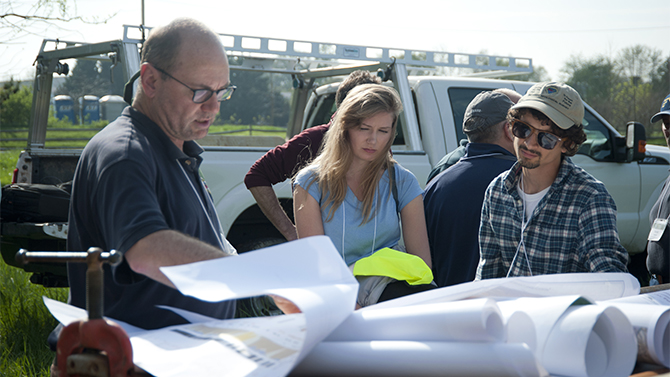

Geology in action
Photos by Wenbo Fan May 04, 2017
Delaware Geological Survey hosts field experience for practitioners
Geological consultants and practitioners from state and federal agencies and industry gained first-hand experience studying several of Delaware’s more interesting rock formations with Delaware Geological Survey (DGS) scientists on April 21.
Structured around the theme “Delaware Geology in the Field,” this is the third biennial Delaware Geological Research Symposium, which aims to disseminate geologic research from Delaware and surrounding states.
“We decided to see geology in the field and talk about the rocks and sediments that these practicing geologists work with every day, helping them earn continuing education credits towards their licensing renewal,” said Sandy Schenck, who co-coordinated the event with fellow DGS geoscientist Peter McLaughlin.
DGS scientists work to better understand geology in a way that impacts the needs of businesses, citizens and educational institutions. According to McLaughlin, this type of field exercise is useful in providing participants with concepts and the latest science on some of Delaware’s rock formations, while also helping them understand how DGS science can be used to benefit their geoscience project work or environmental decision-making.
“This field experience also allows participants to see personally the types of equipment and methods used by DGS scientists who collect the subsurface information that goes into the maps and reports that our stakeholders depend on,” added David Wunsch, the state geologist for Delaware and director of DGS.
The tour included morning stops at Canby Park and the Brandywine Gorge in Wilmington where participants saw examples of Delaware’s hard-rock geology. Here they looked at Piedmont rocks, such as the Brandywine Blue Gneiss, locally known as Wilmington Blue Rock, one of the hardest rocks in the Appalachian Piedmont.
This unique rock unit was formed during an ancient mountain building event 440 million years ago. Quarries along the Brandywine Gorge provided much of the older building stone in Wilmington, including materials used for curbing, bridges and buildings. Schenck noted that the Piedmont stops gave attendees a chance to see the rocks first hand and learn about changes in the way rock formations will be charted on future geologic maps of the area.
UD alumnus John Jengo, a Delaware professional geologist based in West Chester, Pennsylvania, called the field trip “informative, entertaining, educational and a lot of fun, in addition to having exactly the right pace to explore the outcrops and engage in additional dialogue.”
In the afternoon, the geologists examined sediments exposed in a gravel pit in the Odessa area. This stop showcased the effects of the waxing and waning of ice ages on the area’s geological evolution.
“Understanding how sediments were laid down, along with the internal features of the deposits, can help scientists determine how groundwater will flow through these deposits and where water can be pumped to meet societal or community needs, among other things,” said McLaughlin.
The geological tour culminated at the University of Delaware farm in Newark where approximately 60 participants viewed a collection of core samples representing different geological formations that underlie the coastal plain of Delaware. An operational drill rig was on hand for a presentation by DGS driller Steve McCreary about how the DGS obtains core samples from hundreds of feet below the Earth’s surface.
Contact Us
Have a UDaily story idea?
Contact us at ocm@udel.edu
Members of the press
Contact us at mediarelations@udel.edu or visit the Media Relations website

